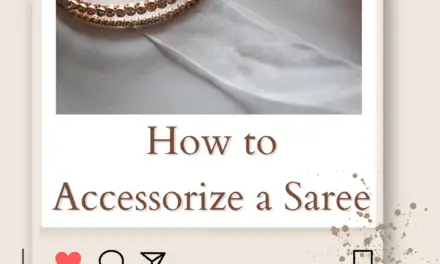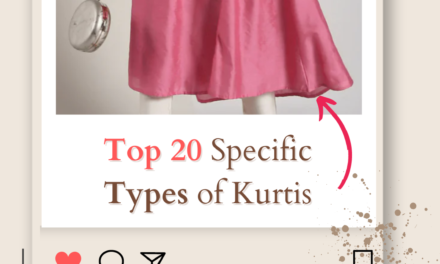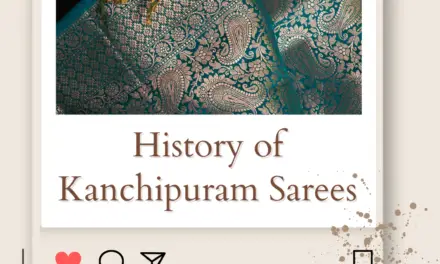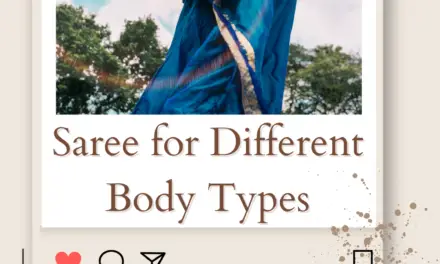Different types of Kurti Materials? Kurtis, with their versatility and comfort, has become a popular choice among women of all ages. The right fabric plays a crucial role in determining the overall look and feel of a kurti.
Explore kurti materials types, their unique characteristics, and the occasions they are best suited for. if you are someone looking to upgrade their kurti collection, this list will help you make an informed decision. and make sure to measure your kurti size, before buying any kurti material online.
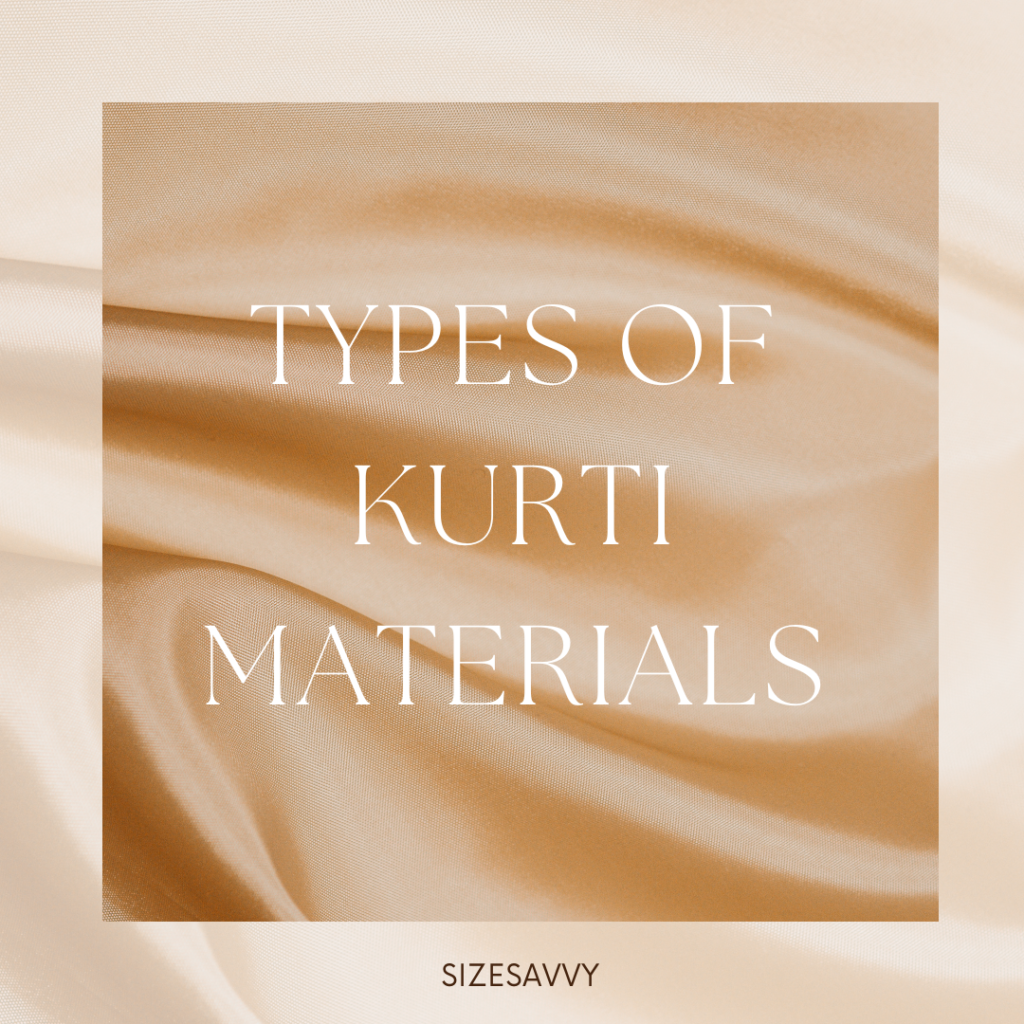
Different Types of Kurti Materials and Their Characteristics
| Kurti Material | Characteristics | Occasions |
|---|---|---|
| Cotton | Breathable, lightweight, and ideal for daily wear | Casual outings and everyday occasions |
| Silk | Luxurious, elegant, and perfect for festivities | Weddings, parties, and special events |
| Rayon | Soft, drapes well, and offers a comfortable fit | Casual and semi-formal occasions |
| Georgette | Sheer, lightweight, and adds a touch of glamour | Parties, evening events, and weddings |
| Chiffon | Breezy, feminine, and creates an ethereal look | Formal gatherings and celebrations |
| Linen | Cool, natural, and gives a relaxed yet stylish vibe | Summer outings and casual gatherings |
- Cotton: Cotton kurtis are highly popular due to their breathability, lightweight nature, and ease of maintenance. They are perfect for everyday wear, keeping you comfortable even in hot and humid climates. Cotton kurtis come in a wide range of prints, designs, and colors, making them suitable for casual outings and everyday occasions.
- Silk: Silk kurtis exude elegance and sophistication. Made from pure silk, art silk, or blended silk, they offer a luxurious feel and a rich appearance. Silk kurtis are often adorned with intricate embroidery or embellishments, making them ideal for weddings, parties, and special events.
- Rayon: Rayon kurtis are known for their softness, drape, and fluidity. They strike a balance between comfort and style, making them suitable for both casual and semi-formal occasions. Rayon kurtis come in various prints and patterns, allowing you to express your style effortlessly.
- Georgette: Georgette kurtis feature a lightweight and sheer texture, offering an ethereal and romantic look. They are often embellished with delicate details such as embroidery, sequins, or lacework. Georgette kurtis are perfect for parties, evening events, and weddings, adding a touch of glamour to your ensemble.
- Chiffon: Chiffon kurtis are known for their lightweight and breezy nature. They have a slightly textured appearance and offer a graceful flow when worn. Chiffon kurtis are popular for formal gatherings and celebrations, creating a feminine and elegant look.
- Linen: Linen kurtis are made from natural fibers and are valued for their cool and breathable properties. They have a relaxed yet stylish appeal, making them ideal for summer outings and casual gatherings. Linen kurtis are appreciated for their comfort and versatility. Do not forget to check out this article on How to Wash Kurtis for more.
Also, read:
Conclusion: Choosing the right fabric is tough for achieving the desired look and comfort in a kurti. Cotton, silk, rayon, georgette, chiffon, and linen are among the popular materials used in kurtis, each offering unique characteristics and being suitable for different occasions.
Check out this video on Kurti Materials:
FAQs Kurti Materials
Which Kurti fabric is the most comfortable to wear?
Cotton is considered one of the most comfortable fabrics for kurtis. It is breathable, lightweight, and absorbs moisture, making it ideal for daily wear, especially during hot and humid weather.
Can I wear a cotton kurti in all seasons?
Yes, cotton kurtis are versatile and can be worn in all seasons. Cotton fabric allows air circulation, keeping you cool in summer, and it also provides a layer of insulation in colder months when paired with appropriate layering.
How do I care for silk kurtis?
Silk kurtas require delicate care to maintain their quality and luster. It is recommended to dry clean silk kurtis to avoid any damage. If handwashing is necessary, use a mild detergent and gently wash in cold water. Avoid wringing or twisting the fabric and dry it in shade to prevent color fading.
Are synthetic fabrics suitable for daily wear kurtis?
Synthetic fabrics like polyester, rayon, and nylon can be suitable for daily wear kurtas. These fabrics are known for their durability, wrinkle resistance, and easy maintenance. However, they may not offer the same breathability as natural fabrics like cotton.
Can I find kurtis made from sustainable or eco-friendly fabrics?
Yes, there are various sustainable and eco-friendly fabric options available for kurtis. Organic cotton, bamboo fabric, hemp, and linen are some examples of eco-friendly materials. Look for kurti brands that prioritize sustainable practices and offer kurtis made from these fabrics to make a more conscious choice.


